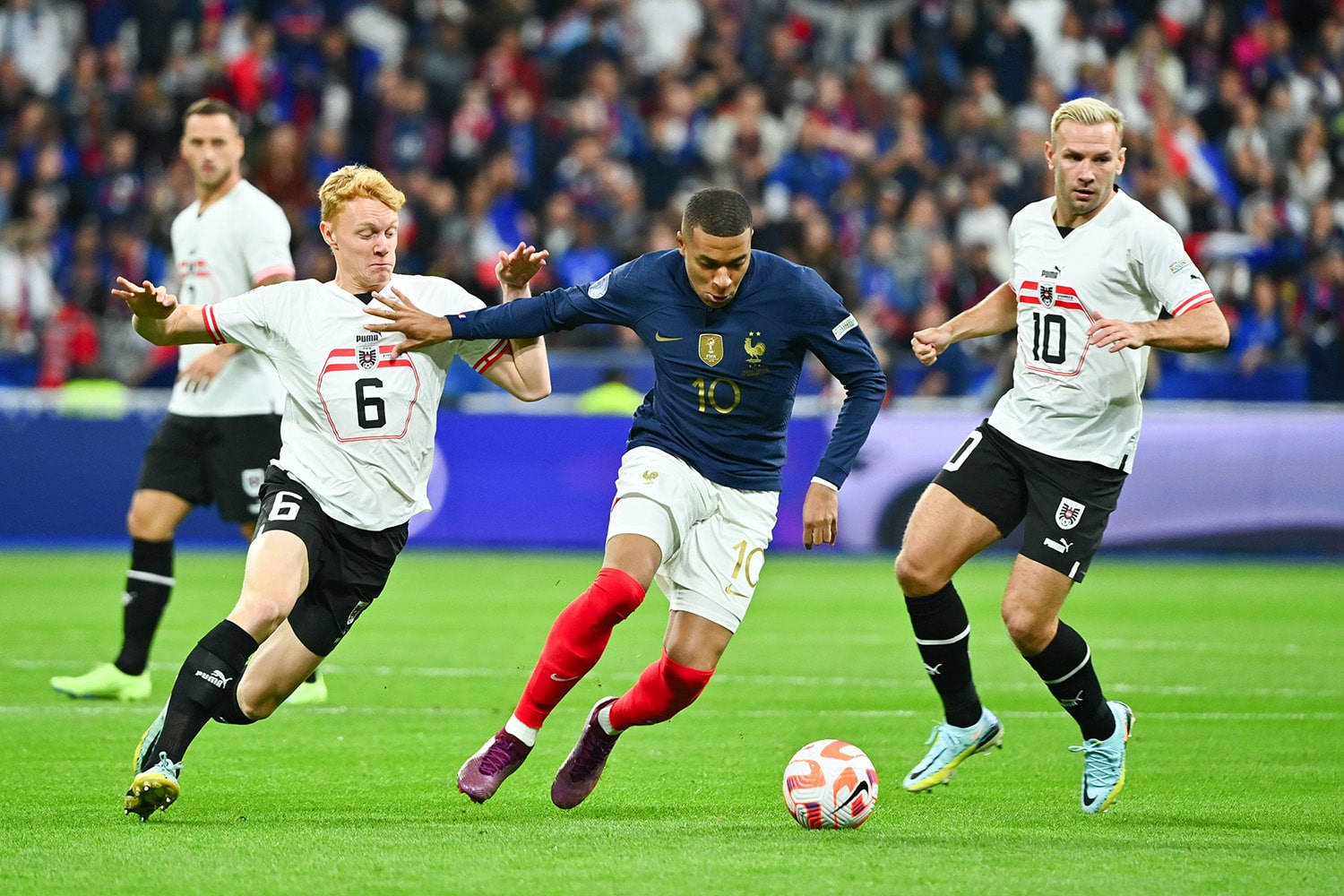
The Unraveling Thread: UCL Players with the Most Successful Dribbles
In the grand tapestry of football, few actions captivate and ignite the imagination quite like the successful dribble. It is a moment of pure individual brilliance, a defiant act against the collective defensive might, where one player, armed with skill, balance, and audacious vision, unthreads the intricate patterns of an opponent’s defense. In the unforgiving crucible of the UEFA Champions League, where the stakes are astronomical and the margins razor-thin, successful dribbles are not merely spectacles; they are crucial tactical weapons, capable of unlocking stubborn defenses, creating space, and tilting the balance of a tie.
This article delves into the elite pantheon of UCL players who have mastered the art of the successful dribble, analyzing their unique styles, the impact they’ve had on their teams, and how their individual wizardry has shaped some of the most memorable moments in Europe’s premier club competition. We are not merely counting attempts, but celebrating the players who consistently turned audacity into advantage, beating their man and advancing play.
The Art and Science of the Successful Dribble
Before we dive into the names, it’s essential to understand what constitutes a "successful dribble" and why it’s such a prized commodity. A successful dribble isn’t just a fancy trick; it’s when a player, while in possession, attempts to go past an opponent and retains the ball, successfully evading the defender. This requires a complex cocktail of attributes:
- Close Control: The ability to keep the ball glued to one’s foot, even at high speed or under immense pressure.
- Balance and Agility: The capacity to shift weight, change direction rapidly, and maintain equilibrium despite challenges.
- Deception: Using feints, body swerves, and changes in pace to mislead defenders.
- Acceleration and Deceleration: The burst of speed to escape a tackle, or the sudden stop to leave a defender grasping at air.
- Vision and Spatial Awareness: Knowing where the defender is, where space will open up, and what the next pass or shot option will be.
Against the world-class defenders populating the Champions League, achieving a successful dribble is a testament to extraordinary talent and courage. It’s a high-risk, high-reward maneuver that, when executed flawlessly, can be devastatingly effective.
Lionel Messi: The Unparalleled Maestro of the Unstoppable Run
Any discussion about successful dribbles, especially in the context of the Champions League, must begin and arguably end with Lionel Messi. The Argentine maestro is not just statistically the most prolific successful dribbler in UCL history; he is a phenomenon whose dribbling transcends mere numbers. His style is characterized by a low center of gravity, an almost supernatural ability to keep the ball incredibly close to his feet, and a deceptive slowness that explodes into devastating bursts of acceleration.
Messi doesn’t rely on flashy step-overs or elaborate tricks. Instead, his dribbling is a symphony of subtle feints, sudden changes in direction, and an uncanny ability to anticipate the defender’s move, reacting before they even commit. He often appears to be jogging, drawing defenders in, only to ghost past them with a subtle flick of the ankle or a sudden acceleration that leaves opponents sprawling. His success rate is astonishingly high because every dribble has a purpose: to advance the ball, to create space for a shot or a pass, or to draw multiple defenders, thereby freeing up teammates.
Throughout his illustrious UCL career with Barcelona and later Paris Saint-Germain, Messi has consistently topped the charts for successful dribbles season after season. His iconic runs, like the one against Bayern Munich in 2015, where he famously left Jerome Boateng on the floor, or countless others where he weaves through entire defensive lines, are etched into the competition’s lore. His dribbling isn’t just about beating one man; it’s about dismantling entire defensive structures, making him the ultimate unlocker against the most disciplined teams in Europe. His sheer volume of successful take-ons, combined with their incredible effectiveness in leading to goals or assists, firmly places him in a league of his own.
Neymar Jr.: The Brazilian Embodiment of ‘Joga Bonito’
Following closely in Messi’s wake, and often sharing the pitch with him, is Neymar Jr. The Brazilian forward is a prime exponent of the "joga bonito" philosophy, combining breathtaking flair with devastating efficiency. Neymar’s dribbling style is distinct from Messi’s; it’s more flamboyant, more audacious, and often involves a wider array of tricks, flicks, and feints designed to humiliate as much as to evade.
What makes Neymar’s dribbles so successful in the Champions League is his incredible agility, balance, and courage to attempt the seemingly impossible even in the tightest of spaces. He thrives on isolation, daring defenders to engage him one-on-one, knowing he has the repertoire to beat them inside or outside. His quick changes of pace, often from a standing start, coupled with his ability to absorb contact and still maintain possession, make him a nightmare for full-backs.
From his early days at Santos, through his prolific years at Barcelona, and now with Paris Saint-Germain, Neymar has consistently been among the top successful dribblers. His ability to draw fouls in dangerous areas, create numerical advantages, and inject unpredictability into attacks has been vital for his teams’ Champions League campaigns. His dribbling often creates the chaos from which his teams thrive, turning structured defenses into fragmented units scrambling to contain his individual brilliance.
The Predecessors and Influencers: Legends of the Take-On
While Messi and Neymar dominate the modern statistics, the art of successful dribbling in the Champions League has a rich history, paved by other iconic figures:
- Ronaldinho: The embodiment of joy on a football pitch, Ronaldinho’s dribbling was pure magic. Unpredictable, full of audacious nutmegs, elastico flicks, and no-look passes, he often succeeded through sheer entertainment and a bewildering array of tricks that left defenders mesmerized. His successful dribbles were often highlights in themselves, but also incredibly effective in opening up defenses for his Barcelona side.
- Cristiano Ronaldo (Early Career): Before transforming into the ultimate goal-scoring machine, early Cristiano Ronaldo at Manchester United was a dazzling winger known for his blistering pace, an endless array of step-overs, and powerful runs. His successful dribbles were often direct and explosive, designed to burst past defenders and create shooting opportunities or crosses.
- Arjen Robben: The Dutch winger possessed one of the most predictable yet unstoppable successful dribbles: cutting inside from the right wing onto his left foot. Defenders knew it was coming, but few could stop it. His explosive acceleration, close control, and ability to shift the ball just enough to create an angle for a shot or pass made him incredibly effective for Bayern Munich in the UCL.
- Franck Ribéry: On the opposite flank to Robben, Ribéry provided a similar directness but with more intricate close control and a lower center of gravity. His successful dribbles often involved rapid changes of direction and a powerful surge forward, making him a constant threat and a key component of Bayern’s dominant sides.
- Eden Hazard: Particularly during his Chelsea years, Hazard was renowned for his exceptional balance, agility, and ability to ride tackles. His successful dribbles were often about twisting and turning in tight spaces, evading multiple defenders with subtle shifts of weight and quick bursts, drawing fouls, and advancing the ball effectively.
The New Guard: Pace, Power, and Precision
The current generation of UCL stars continues to uphold the tradition of devastating dribbling, often adapting their styles to the demands of modern football:
- Kylian Mbappé: The French sensation combines blistering pace with powerful, direct dribbling. His successful take-ons often involve knocking the ball past a defender and simply outrunning them, or using quick feints to create enough space for a burst of acceleration. His dribbles are devastatingly effective, often leading directly to goal-scoring opportunities.
- Vinicius Jr.: The Real Madrid winger has blossomed into one of the most exciting dribblers in the game. His raw pace, unpredictability, and willingness to take on defenders repeatedly make him a constant menace. His successful dribbles are often initiated from wide positions, driving towards the byline or cutting inside, and have been crucial to Real Madrid’s recent UCL successes.
- Mohamed Salah & Riyad Mahrez: Both wingers for Liverpool and Manchester City respectively, exemplify a more deceptive form of successful dribbling. While not as flashy as Neymar, their close control, quick turns, and ability to shift the ball away from defenders in tight spaces allow them to consistently beat their man and create space for incisive passes or shots, often with their signature cut-ins.
Tactical Significance and Enduring Appeal
Beyond the individual brilliance, the successful dribble holds immense tactical significance in the high-stakes environment of the Champions League.
- Breaking Low Blocks: Against teams that sit deep, a player capable of beating their man is invaluable. A successful dribble can collapse a rigid defensive line, creating gaps for teammates to exploit.
- Relieving Pressure: When a team is under intense pressure in their own half, a successful dribble can offer an outlet, carrying the ball away from danger and allowing the team to reset their shape.
- Creating Overloads: By drawing multiple defenders, a successful dribbler effectively creates a numerical advantage elsewhere on the pitch, allowing teammates to operate in more space.
- Drawing Fouls: Elite dribblers are often fouled, winning free-kicks in dangerous areas or even leading to yellow and red cards for opponents, further tilting the balance.
- Changing Game Tempo: A sudden burst of individual brilliance can inject urgency into a stagnant game, shifting momentum and sparking an attack.
In an era increasingly dominated by tactical systems, collective pressing, and data analysis, the successful dribble remains a testament to the enduring power of individual skill. It is a moment of pure footballing poetry, a defiant assertion of individual genius against the organized might of the opposition. The players who have mastered this art in the Champions League are not just entertainers; they are game-changers, capable of unlocking the tightest defenses and etching their names into the annals of football history.
As the Champions League continues to evolve, so too will the styles and techniques of its most successful dribblers. Yet, the core essence remains: the thrill of seeing a player glide past an opponent, leaving them in their wake, remains one of the most exhilarating and vital aspects of the beautiful game. The legends discussed here, and those yet to emerge, ensure that the unraveling thread of the successful dribble will continue to weave its magic in the UCL for generations to come.


